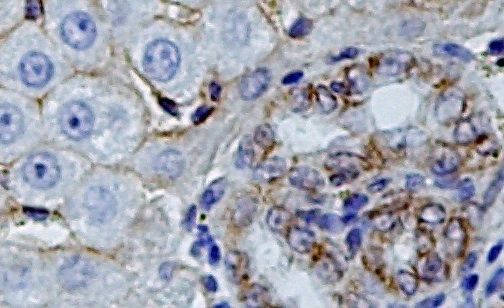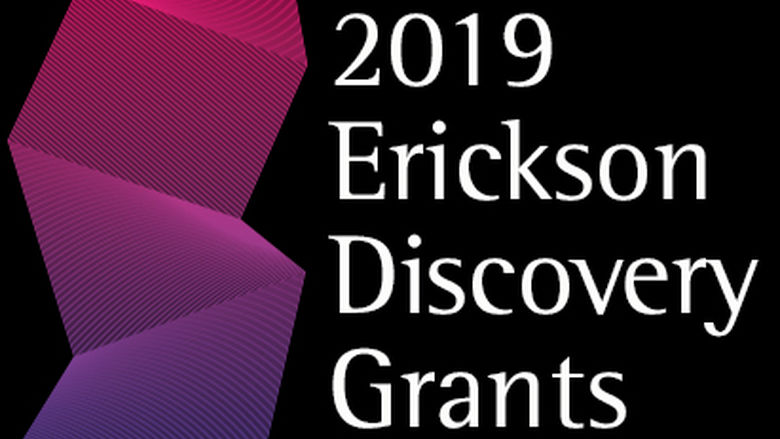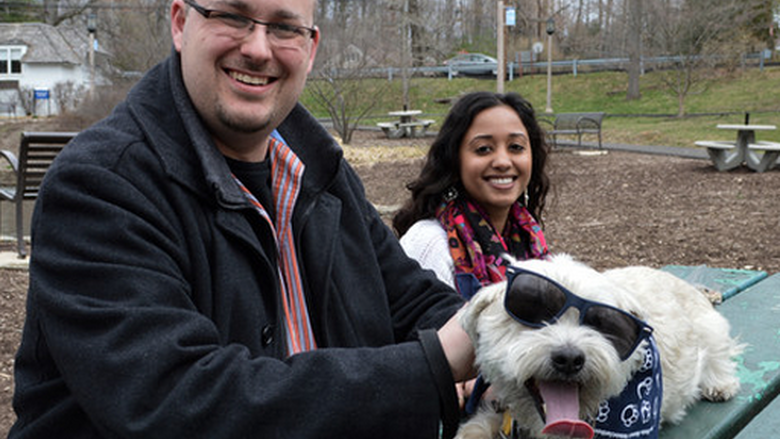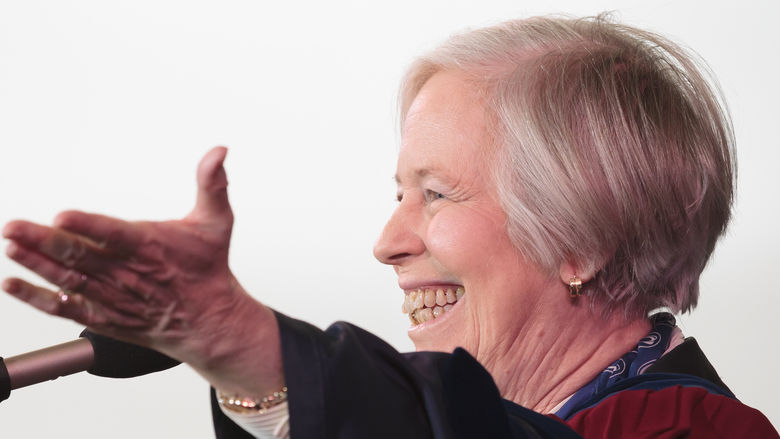
Images of microscopic liver tissue stained for proteins including brown for redox factor-1 (Ref-1) in the nuclei of hepatic cells.
ABINGTON, Pa. -- A Penn State Abington biology professor and two student researchers have identified a cellular pathway that might improve outcomes in elderly populations suffering from heat-related illness or hyperthermia.
Steven A. Bloomer, assistant professor of biology, mentored Abington students Leslee Sholomskas and Kate Roche. A manuscript based on their work, "Aging impairs induction of redox factor-1 after heat stress: A potential mechanism for heat-induced liver injury," has been accepted for publication by The International Journal of Physiology, Pathophysiology and Pharmacology.
"Our experiments model what humans would experience during a heat wave - repeated exposures to hot environmental temperatures, resulting in increases in body temperature or hyperthermia," said Bloomer, whose research into aging and heat-related illness traces back more than a decade.
"We demonstrated that aging impairs the ability to increase levels of the protective protein redox factor-1 (Ref-1) after hyperthermia," he explained. "The result suggests the inability to increase Ref-1 contributes in part to the decline in physiological stress tolerance that is typically observed with aging."
The cellular pathway the researchers identified could be targeted therapeutically to improve outcomes in the elderly since they tend to suffer more severe heat-related illness than younger populations.
The study began several years ago with funding Sholomskas received from an Undergraduate Summer Discovery Grant, now called the Erickson Discovery Grant, from Penn State. Sholomskas, who contributed significantly to data collection, is the lead author on the resulting manuscript.
Biology majors Sholomskas and Roche agreed the partnership was transformative, helping bridge the gap between coursework and working in a laboratory. Sholomskas also learned grant writing, a valuable skill for researchers.
"The skills I obtained working on this project contributed greatly toward securing my first job as a manager in a cancer lab," she said. Currently, Sholomskas, a 2012 Penn State alumnus, is pursuing a master's in human nutrition at Drexel University and interning in nutrition and dietetics at the School District of Philadelphia.
"Dr. Bloomer became my mentor, and we have a lasting friendship on the foundation of the scientific work we did together," she said. "It strengthened my resume and my love of biology and the associated sciences."
Roche, who in addition to her biology degree also earned an art degree in 2014 at Abington, worked with Bloomer for a year.
"I gained an enormous appreciation for the work that scientists do and the rewards and frustrations inherent to the process of research," said Roche, who recently spent several months traveling through Turkey and Indonesia as she contemplates enrolling in a master's program. "It helped me connect ideas for a much broader understanding."
More than a decade into working with undergraduates, Bloomer said the benefits are evident.
"Students bring new ideas that inform laboratory techniques, but more importantly, they provide ideas about research topics that have steered the research in my laboratory in new directions," he said.
Scientist-artist Roche said her creative work was inspired by working in the lab, and led her to see the similarities between the two fields.
"The processes of scientific research and art-making are similar," she said. "Concealed within the final published work or framed piece on the gallery wall are countless mistakes, corrections, discoveries, and hours of dedicated effort."
Funding for the project included awards from Abington Faculty Development Grants and support from ACURA, the Abington College Undergraduate Research Activities.
Learn more about Bloomer's research and ACURA: http://www.abington.psu.edu/academics/faculty/steven-bloomer-ph-d and http://www.abington.psu.edu/ACURA






